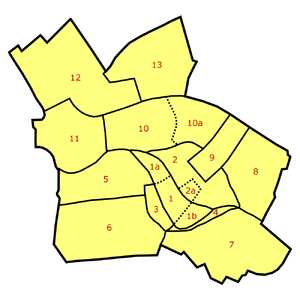Alt-Berlin
| Coat of Arms | Map |
|---|---|
 Seal of 1280 |
 Alt-Berlin within city centre |
| Basic Information | |
| City: | Berlin |
| Borough: | Mitte |
| Locality: | Mitte |
| Area: | ? |
| Population: | ? |
| Coordinates: | 52°31′05″N 13°24′34″E / 52.51806°N 13.40944°ECoordinates: 52°31′05″N 13°24′34″E / 52.51806°N 13.40944°E |
| Elevation: | 34 m (111 ft) above sea level |

Alt-Berlin ("Old Berlin"), also spelled Altberlin, is a neighbourhood (Stadtviertel), situated in the Berliner locality (Ortsteil) of Mitte, part of the homonymous borough. In the 13th century it was the sister town of the old Cölln, located on the northern Spree Island in the Margraviate of Brandenburg. It counts in its territory the zone of Nikolaiviertel.
History

First mentioned in 1244, 7 years after Cölln, it represents the original core of the modern Berlin. The first stone fortification was built, to defend both cities, in 1250 and in 1251 it gained the city rights. In 1280 Berlin, gained the right to mint currency. In that period it appeared on a coat of arms for the first time, close to the symbol of the imperial eagle, two stylized bears; antecedents of the actual rampant bear, symbol of the city. On March 20, 1307 the town was united with Cölln (maintaining its name, Berlin) forming a trading union on political and security matters, and participated in the Hanseatic League.[1][2]
Geography
Alt-Berlin, crossed at its southern borders by the river Spree, is located in the middle of the city. Its northern borders are represented, except for the square area of Alexanderplatz, by the Stadtbahn railway line between the station of Jannowitzbrücke and a rail bridge after Hackescher Markt station.
Photogallery
-

Rotes Rathaus, the city hall of Berlin
-

Aerial view of the Nikolaikirche in the Nikolaiviertel
References
External links
![]() Media related to Alt-Berlin at Wikimedia Commons
Media related to Alt-Berlin at Wikimedia Commons
